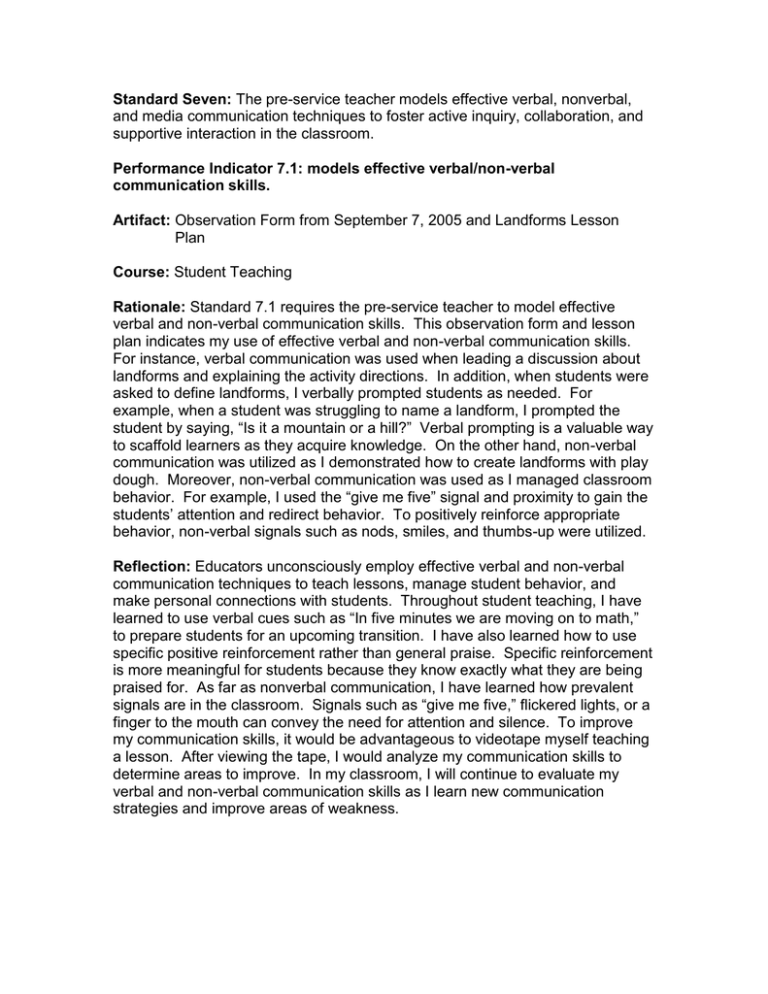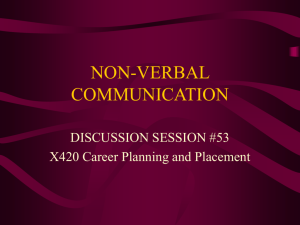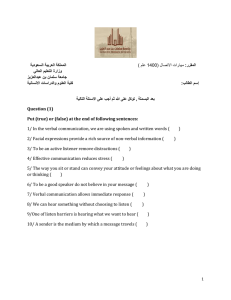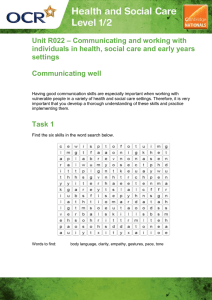Standard Seven: supportive interaction in the classroom.
advertisement

Standard Seven: The pre-service teacher models effective verbal, nonverbal, and media communication techniques to foster active inquiry, collaboration, and supportive interaction in the classroom. Performance Indicator 7.1: models effective verbal/non-verbal communication skills. Artifact: Observation Form from September 7, 2005 and Landforms Lesson Plan Course: Student Teaching Rationale: Standard 7.1 requires the pre-service teacher to model effective verbal and non-verbal communication skills. This observation form and lesson plan indicates my use of effective verbal and non-verbal communication skills. For instance, verbal communication was used when leading a discussion about landforms and explaining the activity directions. In addition, when students were asked to define landforms, I verbally prompted students as needed. For example, when a student was struggling to name a landform, I prompted the student by saying, “Is it a mountain or a hill?” Verbal prompting is a valuable way to scaffold learners as they acquire knowledge. On the other hand, non-verbal communication was utilized as I demonstrated how to create landforms with play dough. Moreover, non-verbal communication was used as I managed classroom behavior. For example, I used the “give me five” signal and proximity to gain the students’ attention and redirect behavior. To positively reinforce appropriate behavior, non-verbal signals such as nods, smiles, and thumbs-up were utilized. Reflection: Educators unconsciously employ effective verbal and non-verbal communication techniques to teach lessons, manage student behavior, and make personal connections with students. Throughout student teaching, I have learned to use verbal cues such as “In five minutes we are moving on to math,” to prepare students for an upcoming transition. I have also learned how to use specific positive reinforcement rather than general praise. Specific reinforcement is more meaningful for students because they know exactly what they are being praised for. As far as nonverbal communication, I have learned how prevalent signals are in the classroom. Signals such as “give me five,” flickered lights, or a finger to the mouth can convey the need for attention and silence. To improve my communication skills, it would be advantageous to videotape myself teaching a lesson. After viewing the tape, I would analyze my communication skills to determine areas to improve. In my classroom, I will continue to evaluate my verbal and non-verbal communication skills as I learn new communication strategies and improve areas of weakness.



